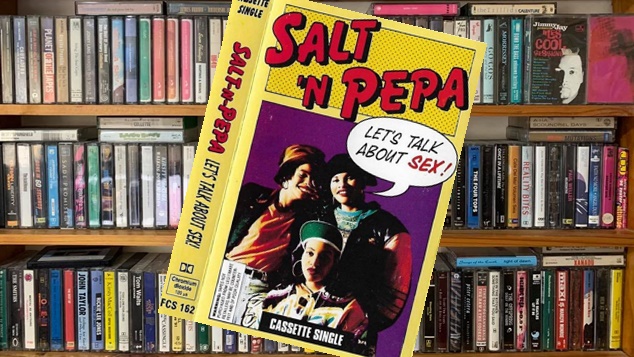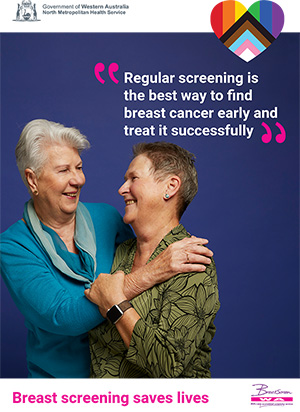In 1991 Salt-n-Pepa urged us to talk about sex
Rappers Salt-n-Pepa scored on of their biggest hits back in 1991 with Let’s Talk About Sex. The song urged people to have open and honest discussions about sex and ralied against censorship of discussions in the media.
Released at the height of the AIDS crisis, the trio also dropped an alternative version of the song called Let’s Talk About AIDS which more directly challenged the spread of the disease and challenged people’s attitudes.

The song was written by the trio’s producer Hurby Azor and heavily samples The Staples Singers 1970s hit I’ll Take You There.
MP Wilson Tuckey made controversial comments about HIV in 1988
In 1988 activists, medical professionals and politicians converged for the Third National Conference on HIV/AIDS. The conference ran from August 4-6.
At the time Western Australian Liberal MP Wilson Tuckey was the shadow health spokesperson. In his address to delegates Tuckey said AIDS was the result of “unnatural activity”.
“‘AIDS is very much a disease that results from deliberate and possibly unnatural activity. You don’t catch AIDS, you let someone give it to you.” Tuckey said.
Tuckey suggested that rather than spending money on education about HIV it would be more effective to introduce blood tests for HIV among the gay community, comparing it to how motorists are given random tests for alcohol. The politician also questioned why people diagnosed with HIV were allowed to keep their medical condition private.
The speech triggered a wave of discussion on talk-back radio blaming people living with HIV for the spread of the disease. In Perth, The Sunday Times published a controversial opinion piece by shock-jock Howard Sattler which said gay people and intravenous drug users were suffering from their own mistakes.
“It is a case of, if the implication fits wear it. AIDS ‘victims’…who acquired the disease through homosexuality or intravenous drug use, are guilty of a dangerous act which they could have prevented. They also suffer from their own mistakes, unlike their medically acquired counterparts who were fatally misled by a health service they believed was beyond reproach.” Sattler said,
Within a month Tuckey was replaced as the coalition’s spokesperson for health.
The Westside Observer reported on the controversy.
“Professor John Dwyer, who was attacked by Tuckey at the National Conference on AIDS in Hobart recently, slammed the proposals charging that Tuckey would be responsible for many more Australians dying if funds were diverted from education on a large scale.
“Professor Dwyer also said the proposal was unworkable and that gay men “might as well wear pink triangles” the report reads.
Michelle Kosky, who was Director of WA AIDS Council at the time told The Westside Observer; “I’d like to think that it (Tuckey’s demotion) was due to his remarks at the National Conference but my feeling is that he was an inappropriate person to be the shadow minister for health.”
Tuckey stayed in parliament until he was defeated at the 2010 election by the Nationals Tony Crook.
Andy Warhol was born on this day
Andy Warhol first came to prominence as a major artist in the pop art movement of the 1950’s. His work explored the relationship between advertising and celebrity culture.
His well known works include paintings of Campbell’s Soup Cans, and his screen prints of celebrities including Marilyn Monroe and Elvis Presley.
Warhol founded the magazine Interview, made films including Chelsea Girls and Empire, and produced the experimental band The Velvet Underground.
Warhol also liked to surround himself with interesting people who he dubbed Warhol superstars, among them actor Edie Sedgewick, Candy Darling, Ultraviolet, Jayne County, Joe Dellesandro, and Holly Woodlawn. Lou Reed’s song Walk on the Wildside lists many of the people who surrounded Warhol in the 1960s and early 70s.
His work has gone on to become highly valuable. In 2008 his painting Eight Elvises was sold for USD$100million, in 2013 Silver Car Crash (Double Disaster) fetched USD$105million.
Warhol was just 58 years old when he passed away unexpectantly in 1987. In just a few decades Warhol had made a mark on the art world, but also explored filmmaking, running a magazine, publishing books, facilitating the making of music and many other things.
Warhol was in hospital recovering from gall bladder surgery when he passed away.
For a large section of his life Warhol kept a diary. From 1976 to just five days before his death, he would start each weekday morning by calling friend Pat Hackett. She would record their conversation and then transcribe them. Warhol also used his dairy system for accounting purposes, detailing how much he’d spent each day.
His entire diary is more than 20,000 pages long. After his death a condensed highlights was published, it’s a fascinating read.





